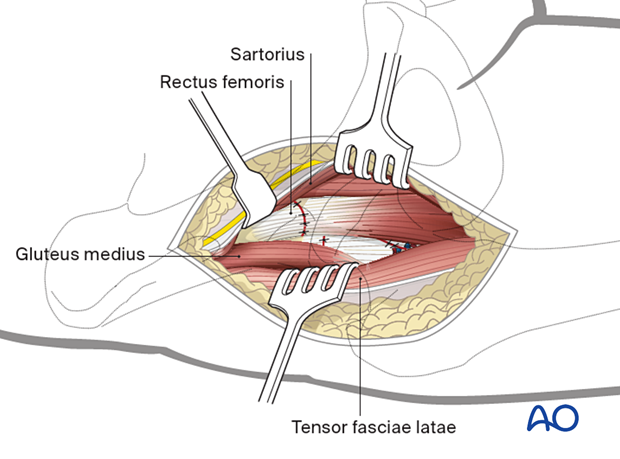Anterior approach (Smith-Petersen) to the proximal femur
1. General considerations
The anterior approach (modified Smith-Petersen/Hueter or direct anterior approach) provides the most direct access to the anterior aspect of the hip. Many surgeons believe that this is the preferable approach for the reduction of femoral head and neck fractures as well as arthroplasty.
With this exposure, many femoral head and neck fractures can be fixed without dislocation of the hip.
2. Skin incision
Start the skin incision 2 cm lateral to the anterior superior iliac spine (ASIS). Continue the incision 8–10 cm distally.
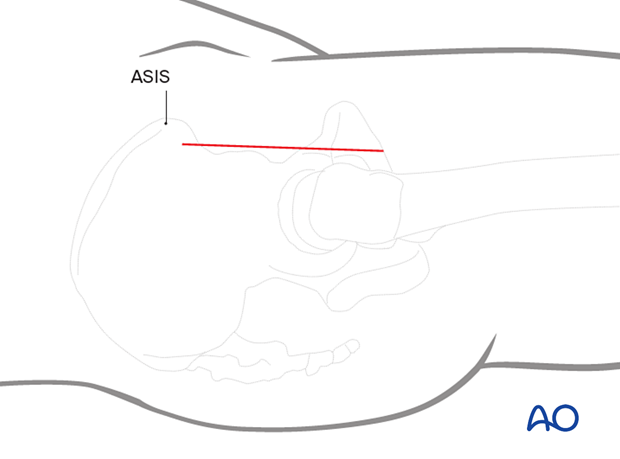
3. Dissection of the sartorius interval
Incise the fascia over the tensor fasciae latae.
The lateral femoral cutaneous nerve lies medially on the fascia.
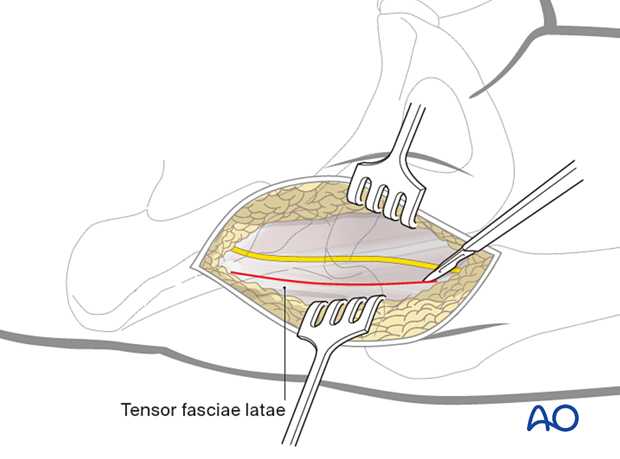
Bluntly dissect the sartorius interval medially to retract the tensor fasciae latae laterally. This avoids damage to the lateral femoral cutaneous nerve.
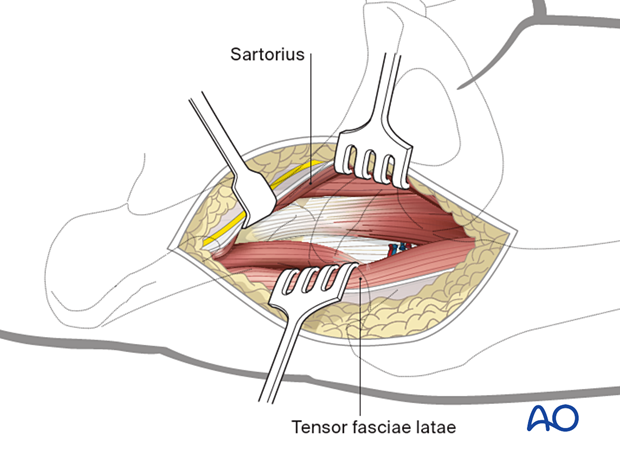
4. Deep surgical dissection
Identify, divide, and ligate the lateral femoral circumflex vessels distally.
Release the direct head of the rectus femoris from the anterior inferior iliac spine, either through the tendon or with an osteotomy. Release the reflected head of this muscle from its more lateral attachment proximal to the hip capsule. Tag the rectus muscle and retract it distally.
Alternatively, if the rectus femoris is small, release the tension on it by flexing the hip and retracting it laterally.
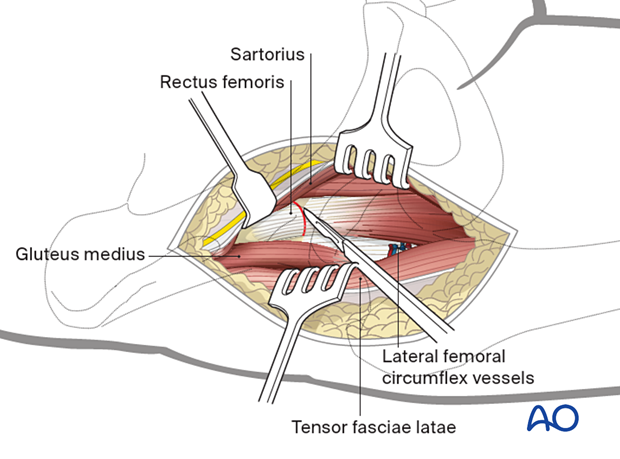
Place two Hohmann retractors laterally and medially around the femoral neck.
Incise the capsule in a T-shaped fashion.
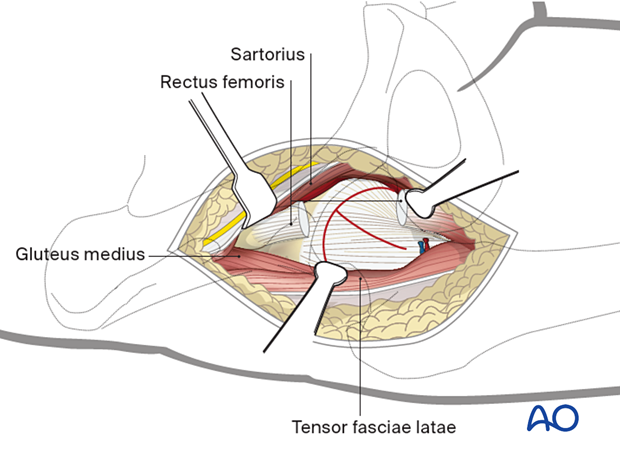
Retention sutures medially and laterally allow exposure of the femoral head and neck. Protect the labrum during the capsulotomy.
Reposition the Hohmann retractors inside the capsule to better expose the femoral neck.
Lateral traction and repositioning of the leg improve access to the bony pathology.
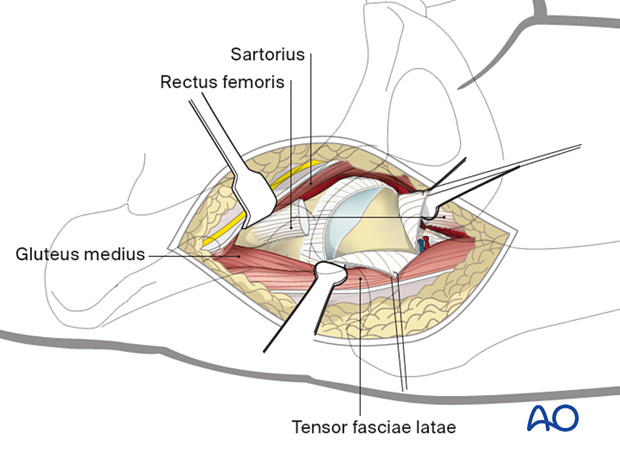
5. Wound closure
Perform a meticulous inspection of all soft tissues before starting wound closure. Remove any questionably ischemic or necrotic tissue and irrigate the entire wound to decrease the risk of periarticular ossification. Insert suction drains if desired.
Close the capsule, repair the rectus femoris (if cut) and close the fascia lata incision with interrupted sutures. Close the subcutaneous tissue and skin as desired.
